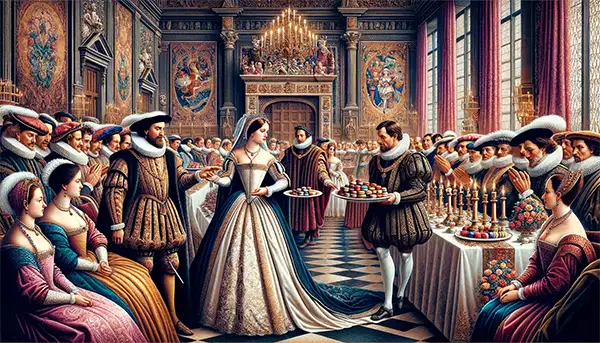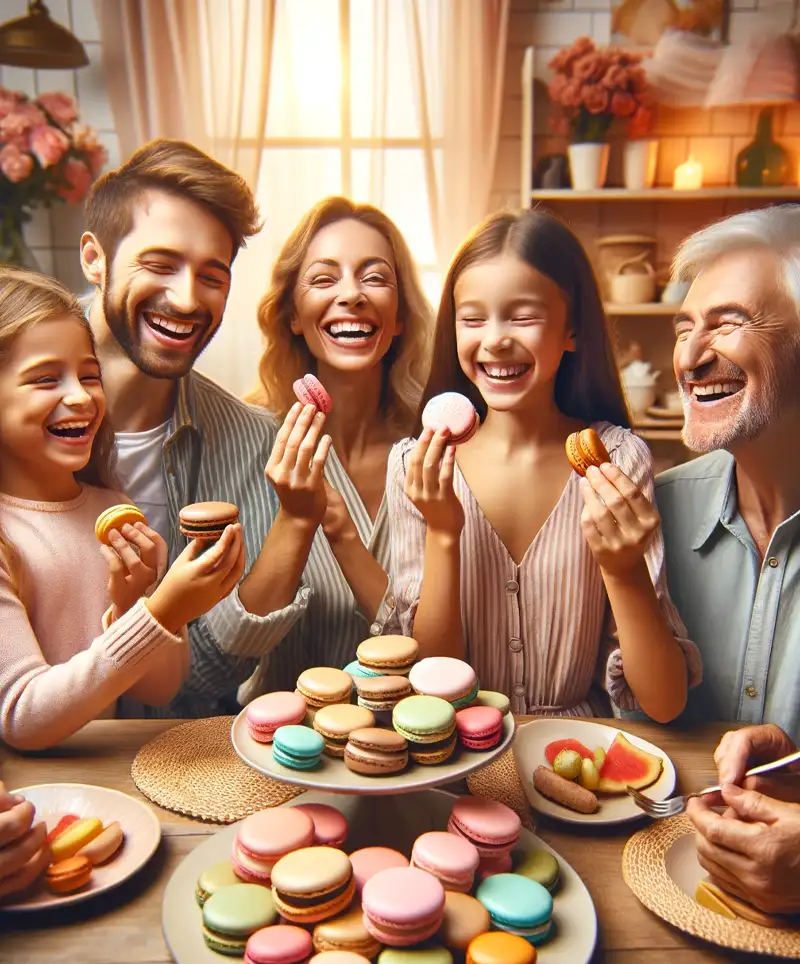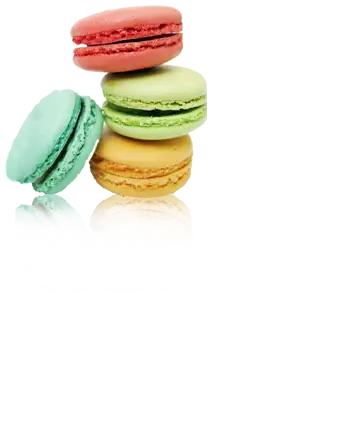The Tiny, Fancy Cookies Worth Celebrating
Macarons: small, colorful, delicate, and, let’s be honest, a little intimidating. These bite-sized French confections have captivated dessert lovers worldwide with their crisp yet chewy texture, vibrant colors, and an air of sophistication that makes you feel like you should be eating them with your pinky up. And what better occasion to indulge than National Macaron Day, a celebration of everything these delightful cookies have to offer?
How Macarons Took Over the World
Believe it or not, macarons weren’t always the dainty, pastel-colored sandwich cookies we know today. Their origins trace back to Italy (yes, Italy!) in the 8th century. The name "macaron" comes from the Italian word maccherone, which means fine dough. When Catherine de’ Medici married Henry II of France in the 16th century, she brought her pastry chefs along, and—voilà!—the macaron made its way to France.
 At first, macarons were simple almond-based cookies—no fancy fillings, no rainbow hues, just crisp, airy bites of sweetness. They were a delicacy mostly enjoyed in aristocratic circles, often served alongside tea or other refined refreshments. It wasn’t until the 20th century that Pierre Desfontaines of Ladurée in Paris had the genius idea to sandwich two cookies together with a ganache filling.
At first, macarons were simple almond-based cookies—no fancy fillings, no rainbow hues, just crisp, airy bites of sweetness. They were a delicacy mostly enjoyed in aristocratic circles, often served alongside tea or other refined refreshments. It wasn’t until the 20th century that Pierre Desfontaines of Ladurée in Paris had the genius idea to sandwich two cookies together with a ganache filling.
This game-changing innovation transformed the macaron into the elegant, flavor-packed confection we recognize today. Over time, Parisian patisseries refined the recipe further, perfecting the balance of crunch, chewiness, and creamy filling. Now, these tiny cookies symbolize culinary sophistication and are beloved worldwide, gracing everything from high-end tea salons to casual bakeries.
What Makes a Macaron So Special?
Macarons are the divas of the dessert world. They demand precision, patience, and the ability to accept failure—because let’s face it, even professional bakers sometimes end up with cracked shells or hollow centers. But when done right, they are sheer perfection.
What sets macarons apart from other cookies is their signature texture: a smooth, crisp outer shell that gives way to a chewy, flavorful interior. The key ingredients? Almond flour, egg whites, and sugar—simple, yet deceptively difficult to master. The batter must be mixed just enough (not too much, not too little), piped into perfect circles, and then rested to form that signature skin before baking.
And then, of course, there’s the infamous macaron “foot”—that frilly little edge that forms at the base of each cookie. Without it, your macaron is just a sad, squashed impostor. (No pressure.)
Aside from their technical complexity, macarons stand out due to their visual appeal. Their bright, colorful shells make them look like edible jewels, and their delicate size makes them the perfect indulgence—just enough to satisfy a craving without feeling excessive.
 Beyond aesthetics, macarons are special because they represent both tradition and innovation. While their fundamental recipe remains largely unchanged, chefs and home bakers continually push the boundaries, experimenting with fillings, flavors, and even alternative ingredients to cater to different dietary needs.
Beyond aesthetics, macarons are special because they represent both tradition and innovation. While their fundamental recipe remains largely unchanged, chefs and home bakers continually push the boundaries, experimenting with fillings, flavors, and even alternative ingredients to cater to different dietary needs.
A World of Possibilities
One of the best things about macarons is the endless variety of flavors. From classic options like vanilla, chocolate, and raspberry to the more adventurous combinations like matcha, salted caramel, and even foie gras (yes, really), there’s a macaron flavor for everyone.
The versatility of macarons makes them a perfect canvas for culinary creativity. Traditional flavors often include pistachio, coffee, and lemon—flavors that complement the subtle sweetness of the almond base. But modern patisseries have turned macarons into flavor experiments, incorporating exotic ingredients like yuzu, lavender, or saffron.
Seasonal flavors also make macarons a year-round treat. Think pumpkin spice in the fall, peppermint in the winter, and fresh berry flavors in the summer. Many high-end pastry chefs craft limited-edition flavors inspired by holidays or global cuisines, ensuring there’s always something new to try.
And for those who enjoy culinary risks, there are always experimental flavors like wasabi, bacon, or truffle. Because nothing says “culinary adventure” like taking a bite of a macaron and wondering if you just ate dessert or dinner. Whether you’re sticking to a tried-and-true classic or pushing the flavor boundaries, there’s no wrong way to enjoy a macaron—except, perhaps, dropping one on the floor (which is basically a dessert tragedy).
Celebrating National Macaron Day
On National Macaron Day, the best way to celebrate is, of course, by eating as many macarons as possible. Many bakeries around the world participate by giving away free macarons (because nothing makes a day special quite like free desserts). Some places even hold macaron-making workshops, allowing you to experience firsthand just how frustratingly precise these tiny cookies can be.
If you’re feeling brave, you can attempt to bake your own. Just be prepared for a potential emotional rollercoaster—excitement, frustration, determination, despair, and, finally, triumph (hopefully). But even if your macarons come out looking more like tiny, colorful pancakes, they’ll still taste delicious. And that’s what really matters.
The Eternal Mix-Up
Before we wrap up this macaron appreciation session, let’s settle one thing: macarons and macaroons are not the same thing.
Macarons are delicate, almond-based French sandwich cookies. Macaroons, on the other hand, are coconut-based, chewy mounds that look like they were dropped onto a baking sheet in a hurry. Both are delicious, but confusing them is a quick way to make a pastry chef cry.
National Macaron Day is more than just an excuse to indulge in a few (or a dozen) of these delightful treats. It’s a day to appreciate the artistry, the precision, and the sheer joy that comes from biting into a perfectly made macaron. Whether you’re enjoying a classic flavor, testing a bold new combination, or making a valiant attempt to bake your own, take a moment to savor the magic of this tiny but mighty cookie.
And if all else fails, just head to the nearest bakery and let the experts handle it. No judgment here—just admiration for your excellent taste in desserts.
Please Share our Content






 At first, macarons were simple almond-based cookies—no fancy fillings, no rainbow hues, just crisp, airy bites of sweetness. They were a delicacy mostly enjoyed in aristocratic circles, often served alongside tea or other refined refreshments. It wasn’t until the 20th century that Pierre Desfontaines of Ladurée in Paris had the genius idea to sandwich two cookies together with a ganache filling.
At first, macarons were simple almond-based cookies—no fancy fillings, no rainbow hues, just crisp, airy bites of sweetness. They were a delicacy mostly enjoyed in aristocratic circles, often served alongside tea or other refined refreshments. It wasn’t until the 20th century that Pierre Desfontaines of Ladurée in Paris had the genius idea to sandwich two cookies together with a ganache filling. Beyond aesthetics, macarons are special because they represent both tradition and innovation. While their fundamental recipe remains largely unchanged, chefs and home bakers continually push the boundaries, experimenting with fillings, flavors, and even alternative ingredients to cater to different dietary needs.
Beyond aesthetics, macarons are special because they represent both tradition and innovation. While their fundamental recipe remains largely unchanged, chefs and home bakers continually push the boundaries, experimenting with fillings, flavors, and even alternative ingredients to cater to different dietary needs.








 "Sláinte!" is a traditional Irish expression used as a toast, equivalent to "Cheers!" in English.
"Sláinte!" is a traditional Irish expression used as a toast, equivalent to "Cheers!" in English.